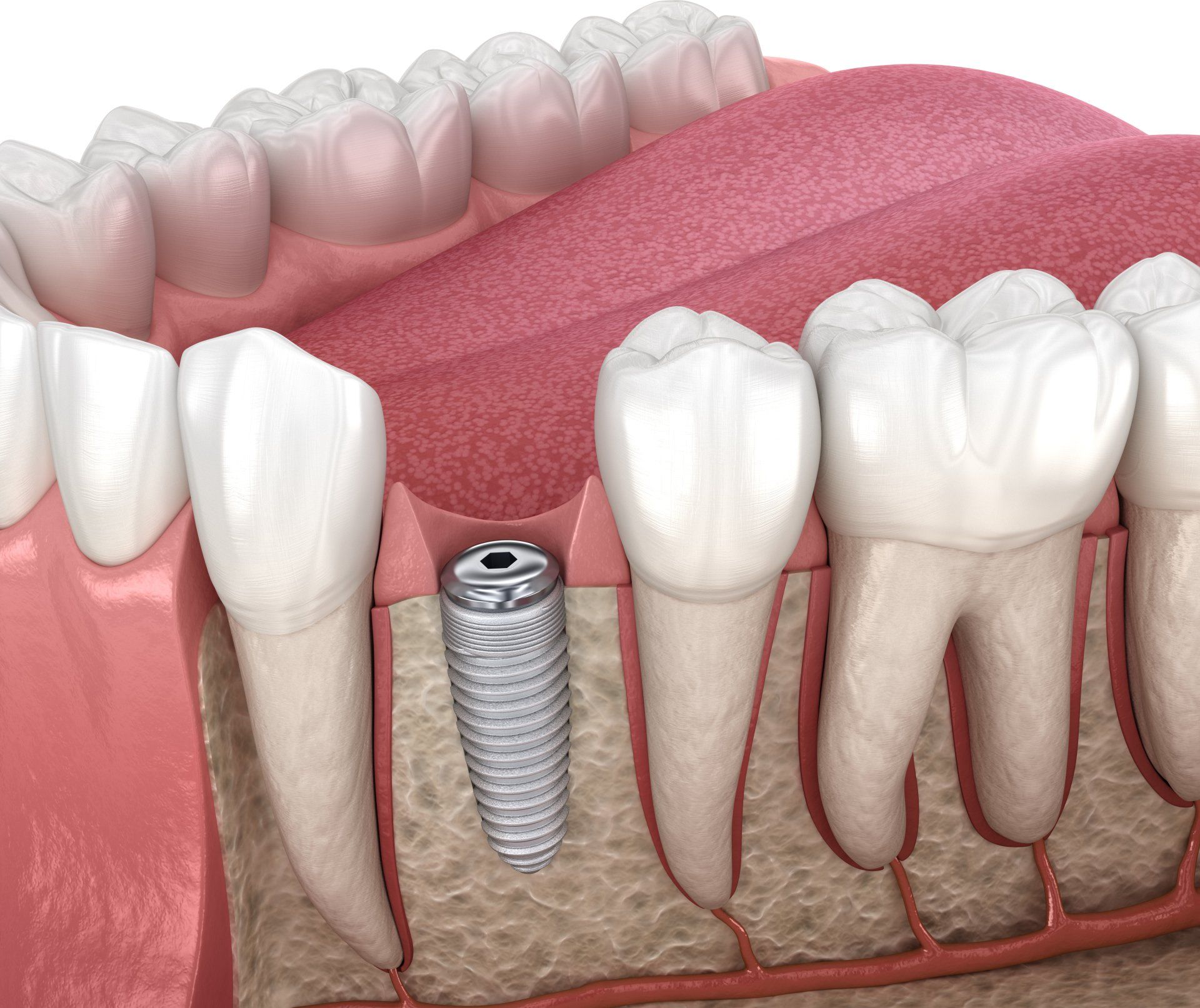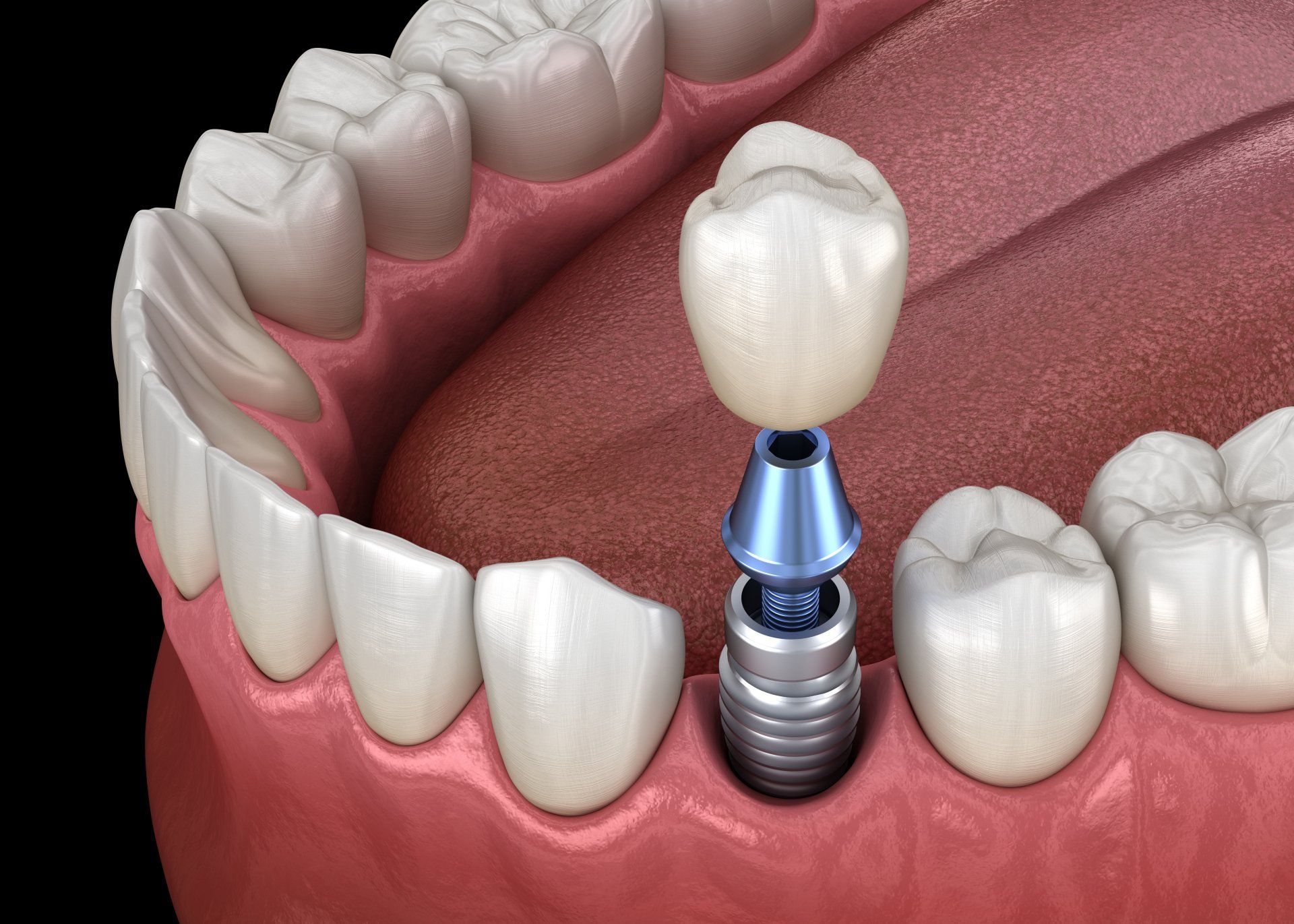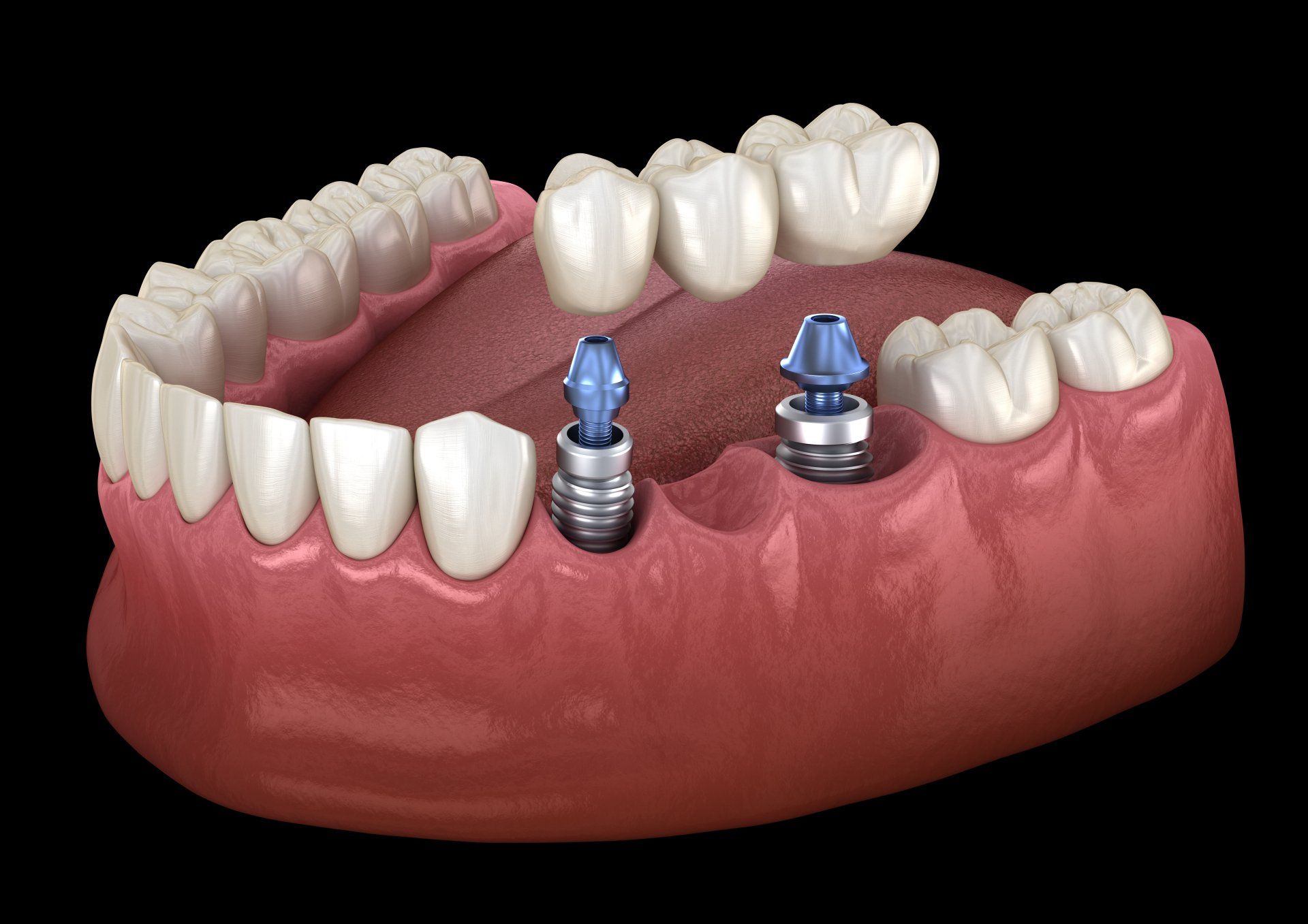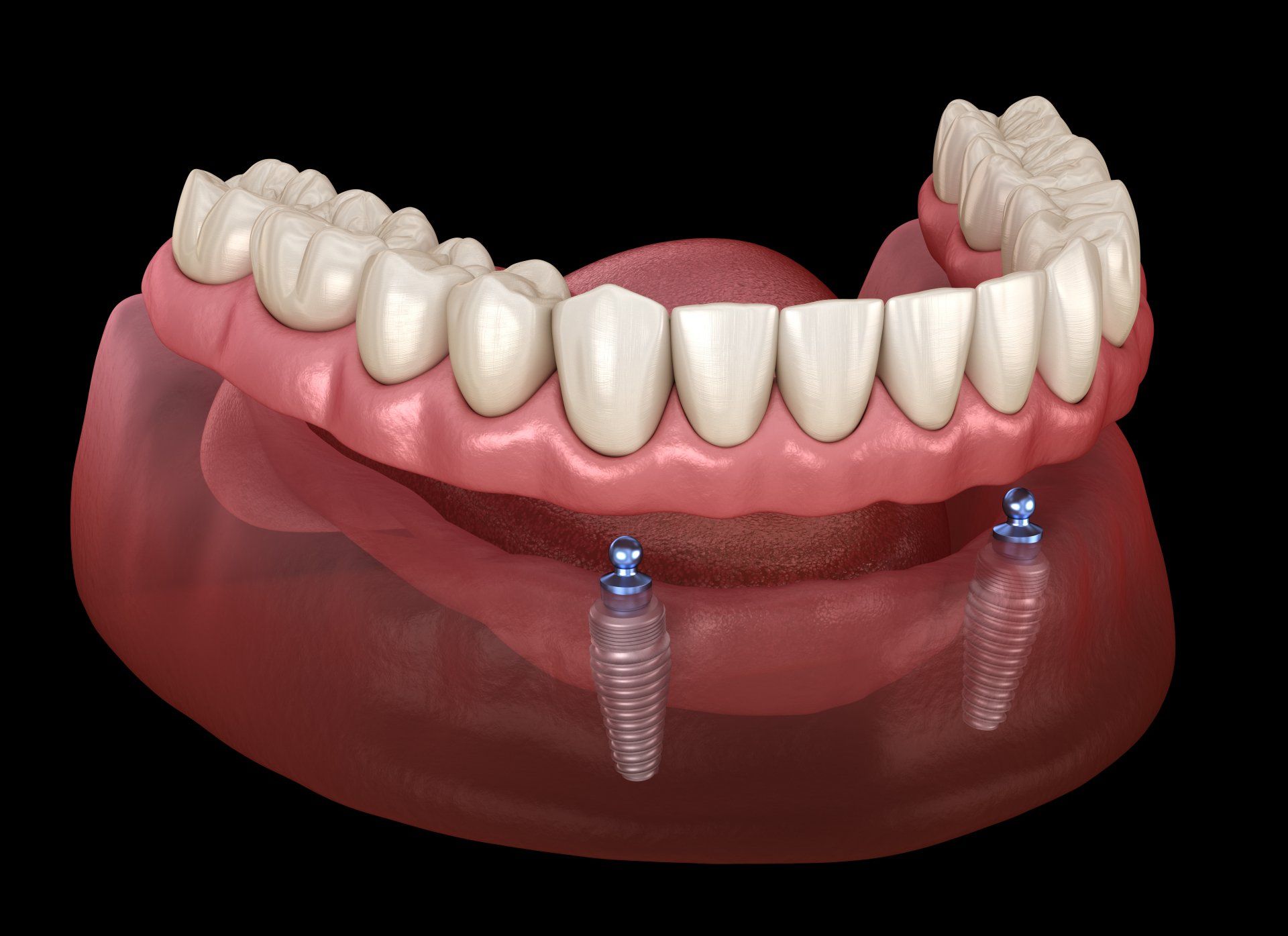Implant Based Dentistry
Dental implants are one of the most innovative avenues of treatment in modern dentistry. By using implant procedures, we can replace damaged or missing teeth without needing to alter adjacent teeth to provide you with a predictable, highly successful, and esthetic result.
Implant Placement

When a tooth is no longer present, cannot be restored with conventional dentistry, or is infected and a root canal cannot save the tooth, an implant is a great long-term solution to replacing the tooth. Dental implants have an extremely high success rate (about 97%), and when cared for properly can last the patient for the remainder of their life.
The first step to placing an implant is to extract the damaged or infected tooth and ensure that there will be enough bone for an implant by placing a bone graft. This will then need to heal for three months prior to placing the implant.
If the tooth is already missing, then a three dimensional image will be taken to evaluate the implant site.
The implant placement is a relatively routine procedure. An oral surgeon will access the implant site, prepare the jaw to receive the implant, and place the implant. The implant will then be evaluated to ensure it has reached the desired stability. Although often completed with just local anesthetics, IV anesthetics or nitrous oxide (laughing gas) can also be requested for the procedure.
After the implant is placed, there is a three month waiting period to allow for the implant to integrate itself into the surrounding bone. After three months, the implant will be evaluated by the oral surgeon and then the restorative dentist can begin to take impressions to build upon the implant.
If desired, an interim partial denture or "flipper" can be used to give the patient a false tooth in that location during this healing period.
Although implants will never form a "cavity", periodontal disease can form around dental implants when oral hygiene is not adequately maintained. This gum disease can cause bone around the implant to erode and the implant to loosen and fail over time. For this reason it is essential to regularly come in for dental cleanings and exams, and to floss and brush regularly.
Implant Retained Crown and Bridge

After the implant has been placed, has stabilized for three months, and has been evaluated for its integration, then it is ready to be restored.
If only one tooth is missing, a crown can be made to fit the implant. An impression is taken of the implant, which is then sent to the lab to create a model of your implant location. Following this model, they will create a custom abutment (the blue component in the above images), which is specifically designed to hold your final crown. The final crown will then be made to fit this abutment.
Once we receive the abutment and crown at our office, we will evaluate their fit and esthetics. If they are to your satisfaction, then the abutment will be placed and the crown will be cemented onto the abutment.
Implant Retained Bridge

If multiple teeth are missing, a cement retained bridge can be used to connect multiple implants with a floating "false tooth" between them. The steps are similar to above, but with two or more implants.
Implant Retained Denture

If numerous teeth are missing or you already have a set of dentures, placing implants is a way to achieve stability and give you more function when eating.
One of the most common complaints with complete or partial dentures is their movement and fit when chewing and talking. Patients often have to use denture adhesives in order to keep them in place. Implant retained dentures minimize these issues by providing structural support for the denture.
Multiple implants need to be placed in order to have a successful implant retained denture. The upper arch requires a minimum of four implants, while the lower arch requires two to four implants.
During the three month healing period, we will either adjust your prior denture or make you an interim denture that fits to the implants to give you function while you heal.
Once stable, these implants will have a specific type of engager that is used to attach to the underside of the denture. This is achieved by hollowing out a small portion of the denture and custom-fitting the denture to these engagers.
Home care of both the denture and the implants is essential. The dentures should be removed nightly for cleaning, and the implant engagers, gums, and any remaining teeth should be brushed and cleaned regularly. The patient should also maintain regularly schedule appointments to refit the denture's attachment to the implants and to clean and maintain the implants.


